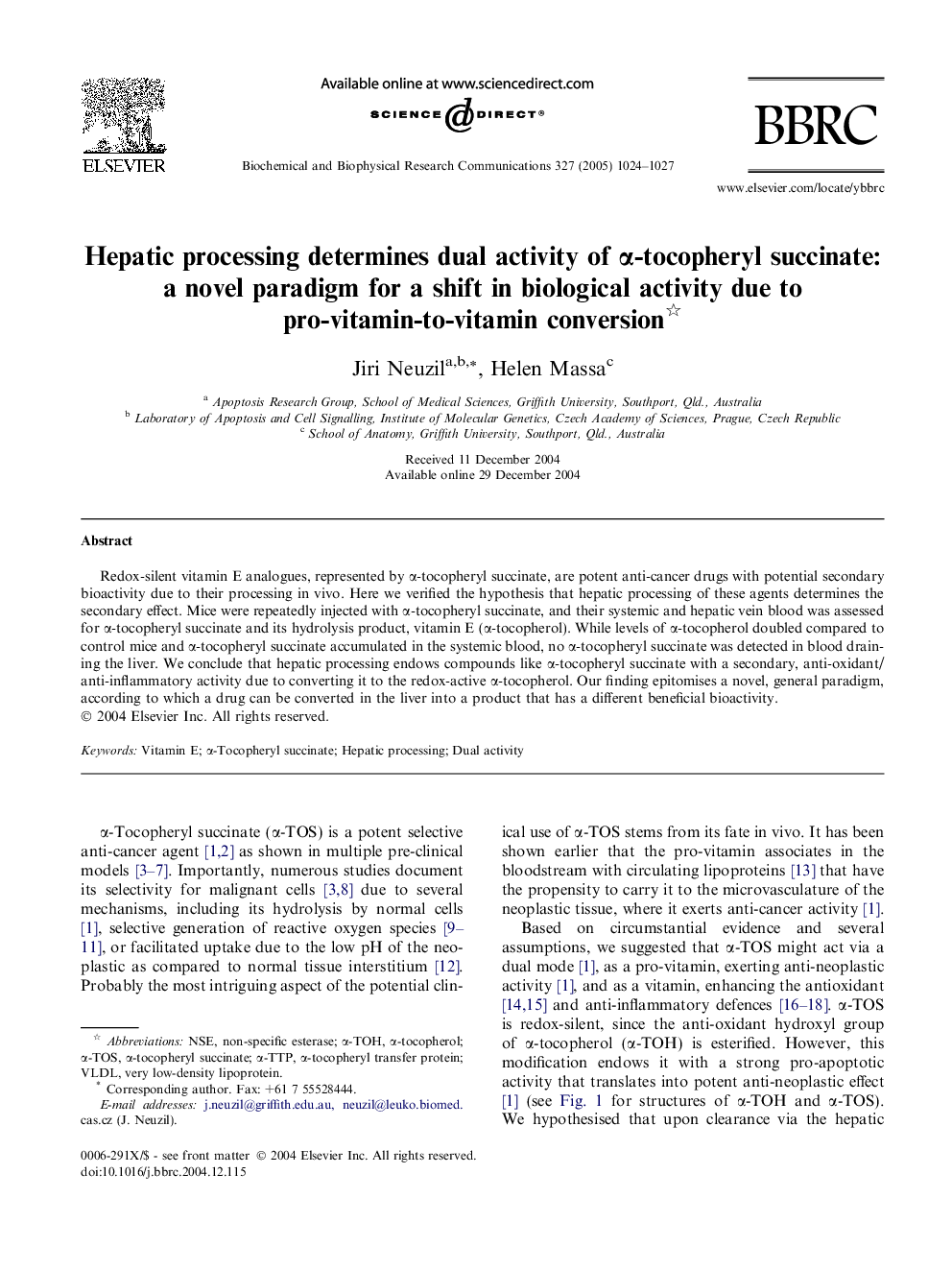| Article ID | Journal | Published Year | Pages | File Type |
|---|---|---|---|---|
| 10771257 | Biochemical and Biophysical Research Communications | 2005 | 4 Pages |
Abstract
Redox-silent vitamin E analogues, represented by α-tocopheryl succinate, are potent anti-cancer drugs with potential secondary bioactivity due to their processing in vivo. Here we verified the hypothesis that hepatic processing of these agents determines the secondary effect. Mice were repeatedly injected with α-tocopheryl succinate, and their systemic and hepatic vein blood was assessed for α-tocopheryl succinate and its hydrolysis product, vitamin E (α-tocopherol). While levels of α-tocopherol doubled compared to control mice and α-tocopheryl succinate accumulated in the systemic blood, no α-tocopheryl succinate was detected in blood draining the liver. We conclude that hepatic processing endows compounds like α-tocopheryl succinate with a secondary, anti-oxidant/anti-inflammatory activity due to converting it to the redox-active α-tocopherol. Our finding epitomises a novel, general paradigm, according to which a drug can be converted in the liver into a product that has a different beneficial bioactivity.
Related Topics
Life Sciences
Biochemistry, Genetics and Molecular Biology
Biochemistry
Authors
Jiri Neuzil, Helen Massa,
